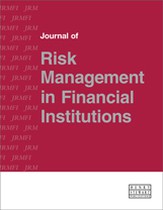Review of theoretical advancements in AI/ML classification models for credit risk assessment
Abstract
In the realm of credit risk assessment, the utilisation of artificial intelligence (AI) and machine learning (ML) classification models has become increasingly prevalent. This paper thoroughly investigates latest advancements in AI/ML classification models for credit risk assessment, which are crucial for assessing the creditworthiness of individuals and businesses. Key findings reveal that modern AI/ML techniques, particularly Random Forest and XGBoost, outperform traditional logistic regression methods. Additionally, interpretability techniques, including Shapley Additive exPlanations (SHAP) and feature importance analysis, improve the understanding and transparency of model predictions. This paper synthesises recent research findings and industry developments to provide practitioners and researchers with insights into model selection, evaluation metrics and explanation techniques, thereby contributing to the ongoing evolution of credit risk management strategies in the financial sector.
The full article is available to subscribers to the journal.
Author's Biography
Lingling Fan is a Senior Manager in Retail Models and Analytics at Scotiabank. She is responsible for building small business modelling, which involves creating predictive models and analytical frameworks tailored to the needs of small enterprises to optimise decision-making processes and enhance financial performance. Lingling has built a successful career as a credit risk modelling specialist at the bank, backed by a PhD degree in mathematics and expertise at the doctoral level in statistics.
Citation
Fan, Lingling (2025, March 1). Review of theoretical advancements in AI/ML classification models for credit risk assessment. In the Journal of Risk Management in Financial Institutions, Volume 18, Issue 2. https://doi.org/10.69554/NKJL6812.Publications LLP
